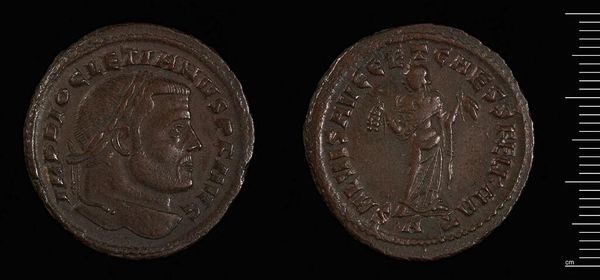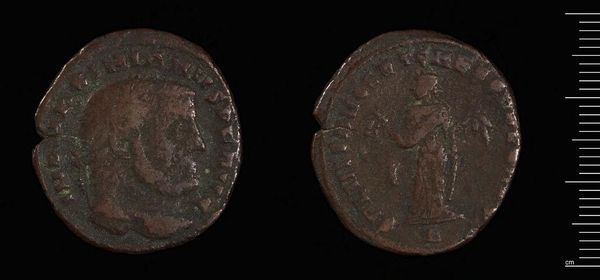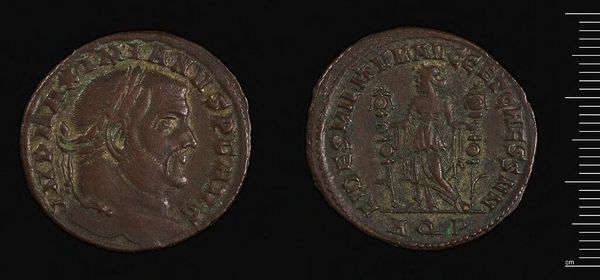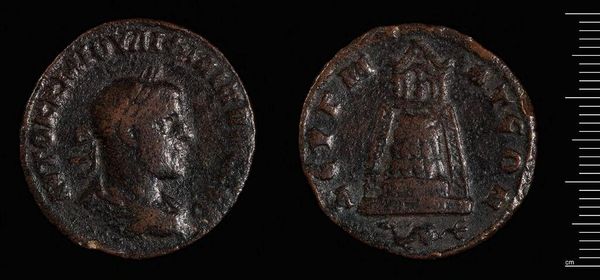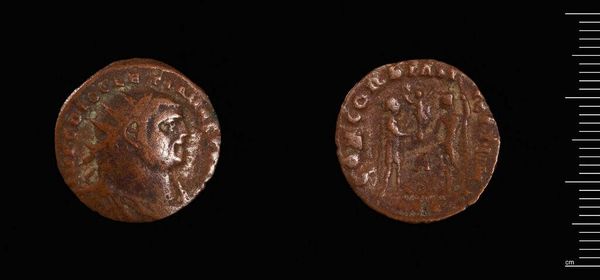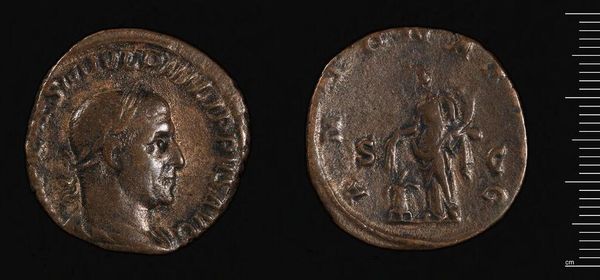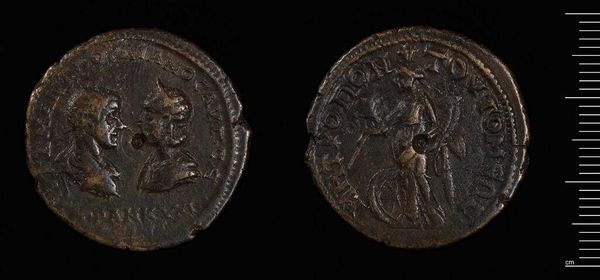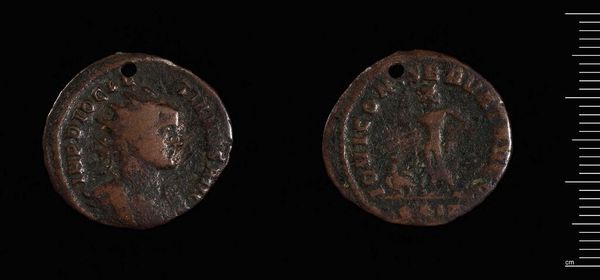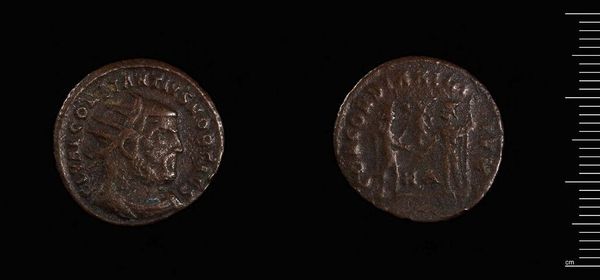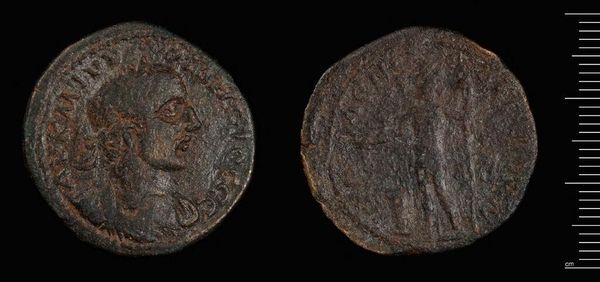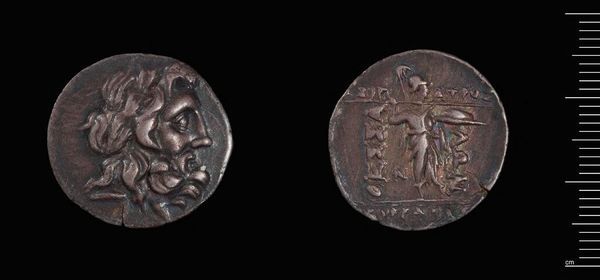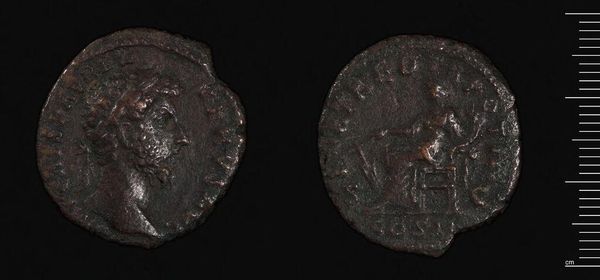
Dimensions: 9.27 g
Copyright: CC0 1.0
Editor: This is a Follis of Constantius I, from Antioch. What immediately strikes me is the presence of the Emperor and the goddess on the other side. How do we understand this kind of imagery in the socio-political context of the Roman Empire? Curator: This coin presents us with a fascinating intersection of power, divinity, and identity. The representation of Constantius alongside a goddess wasn't merely aesthetic; it was a carefully crafted message. Can you think about who these coins were meant to reach, and what messages the ruler intended to communicate? Editor: Well, I suppose everyone? But what would that message be? Curator: Exactly! This coin speaks to the crucial role of imperial propaganda in shaping public perception and legitimizing rule. The fusion of divine and imperial imagery reinforced the Emperor's authority. It was a calculated visual language to project power and stability. What do you make of that? Editor: It's interesting how art was actively used as a tool for social control and influence. I guess I never considered coinage in those terms. Curator: Precisely. Studying the Follis of Constantius I allows us to understand the complex power dynamics at play within the Roman Empire and the ways in which identity was constructed and disseminated through material culture.
Comments
No comments
Be the first to comment and join the conversation on the ultimate creative platform.
